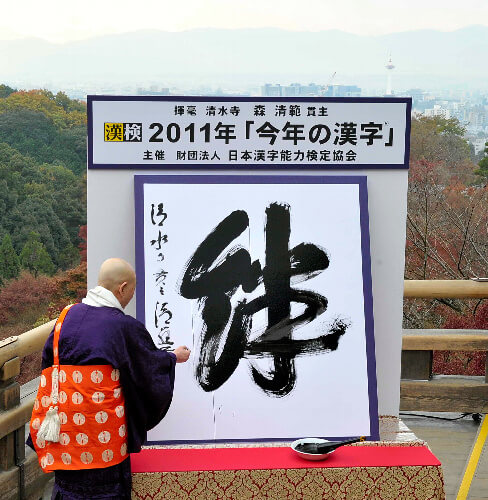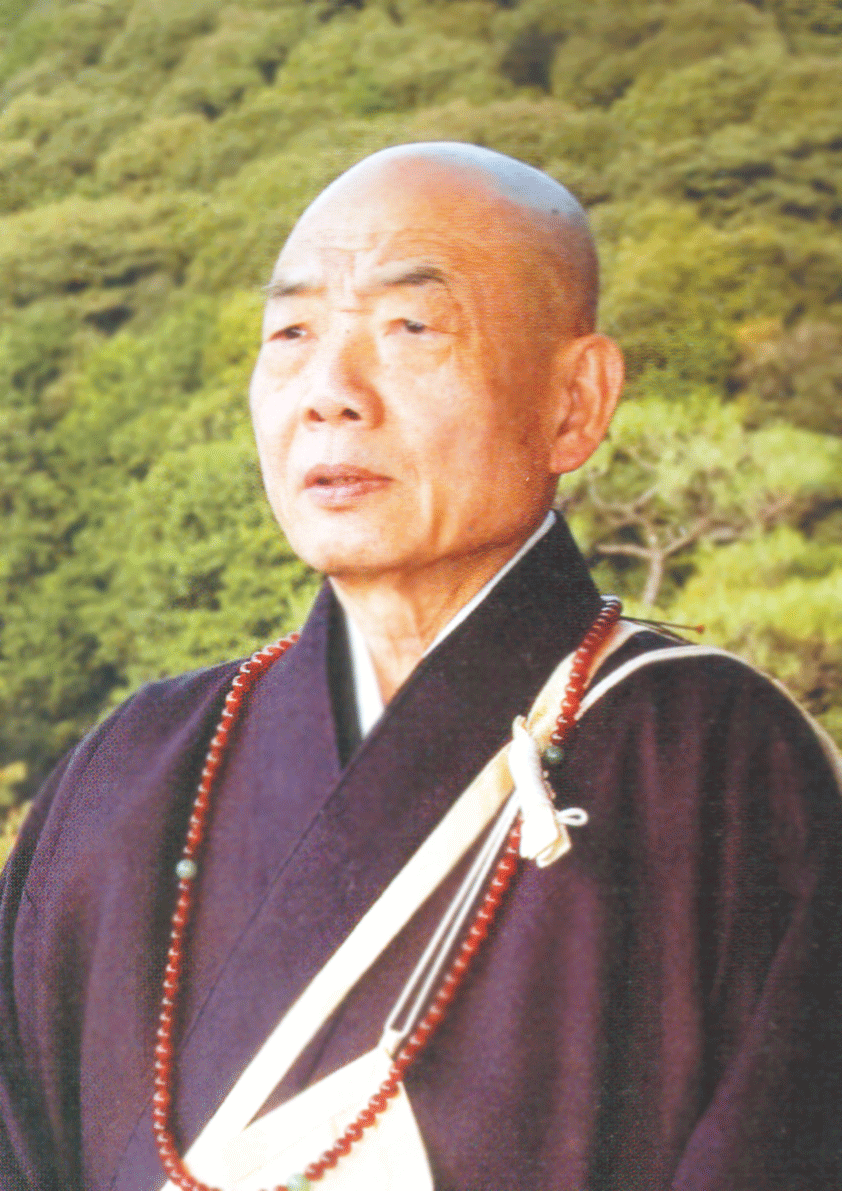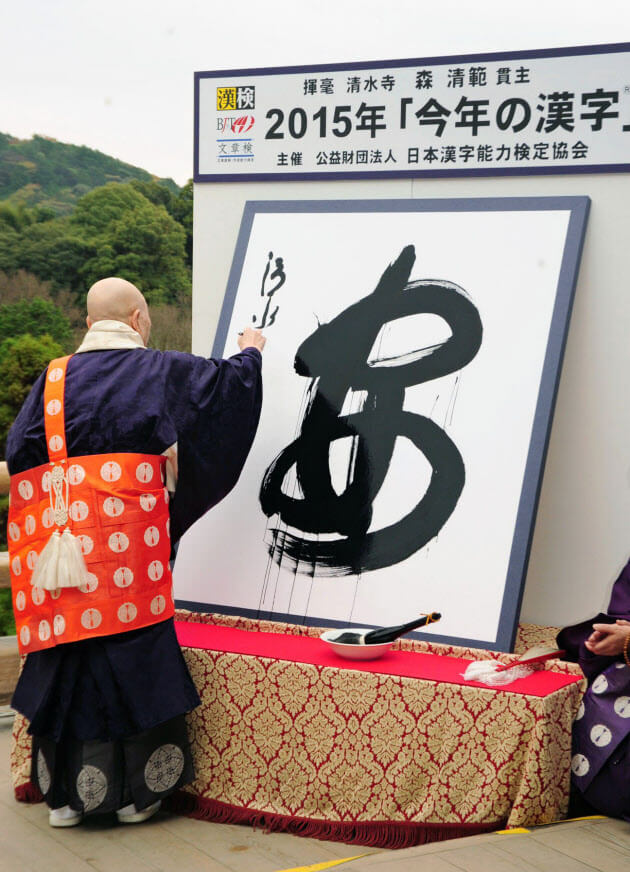Kanji of the Year in 2015
Kanji of the Year
Since 1995, the “Kanji of the Year,” has been announced every December 12th at the Kiyomizu-dera Temple. One Chinese character, representing the social conditions of that year, is chosen by the Japan Kanji Aptitude Testing Foundation and celebrated as “the day for Kanji.” At the time of the announcement, the Chinese character is brushed on a large sheet of Japanese writing paper by the chief priest of the Kiyomizu-dera Temple upon the “Oku no in” (inner sanctuary) stage.

“Kizuna” (bonds) Kanji of the Year 2011
Seihan Mori, the chief abbot of the Kiyomizu-dera Temple, is known for writing the “Kanji of the Year” every year. Therefore, he is known as a “nōshoka” (master of calligraphy), and his pieces of calligraphy are very popular.

Seihan Mori
An (Safe, Relief, Peace)
“An” was chosen as the character to represent the 2015 year, and announced by the Japan Kanji Aptitude Testing Foundation at the Kiyomizu-dera Temple on December 15. Seihan Mori wrote the character on the Echizen washi (Japanese paper made in former Echizen province), which is 1,500mm tall and 1,300mm wide, with a extra‐big brush.

“An” Kanji of the Year in 2015
According to the association, the number of applications was 129,647. “An” character, which ranked first, got 5,632 votes. This is because Japanese people paid much attention to the process of the deliberation of a national security-related bills and an epidemic of terrorism held around the world made them concerned. Seihan Mori said, “this result means Japanese people’s will to make a safe society next year.”

An
Our Company’s Products of Seihan Mori

